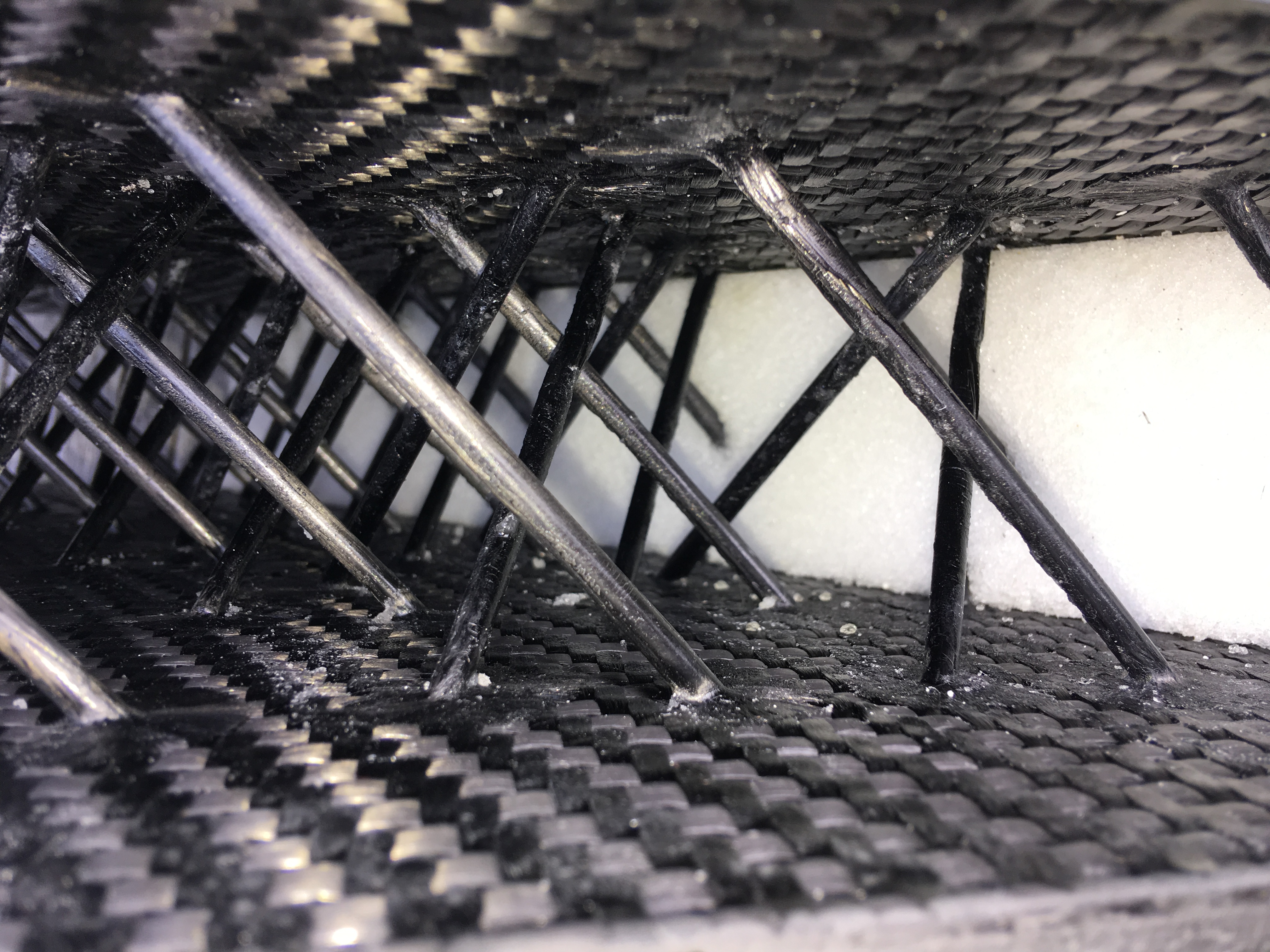
Sicomin has developed a carbon fiber version of its MaxCore sandwich core infusion technology.
The technology was developed earlier in 2019 with flat and curved panels using glass and flax reinforcement fibers, and is now available with carbon fabrics for the laminate and carbon fibers for the thru-foam structure, Sicomin says.
At Composites Europe and the CAMX show the company will demonstrate a 60 mm thick part with 4 mm diameter carbon filament bundles inserted through a Rohacell core, with carbon skins infused with Sicomin’s high modulus epoxy system SR 1710, which is suitable for carbon fiber parts.
According to the company, the carbon fiber version of MaxCore is suitable for applications that become too heavy when engineered in glass fiber and require a lightweight and high stiffness solution. This includes aerospace, marine, civil engineering, rail and other transportation, Sicomin says.
MaxCore involves inserting dry fiber into thick foam cores, with dry filaments of glass, natural fibers or carbon, for infusion manufacturing of large sandwich structures. The fibers can inserted into the foam in multiple orientations and produce the mechanical properties of the infused processed core. Sicomin says that it can place these reinforcement fibers with precise fiber angles and positions within the core and can produce panels with core thicknesses as high as 300 mm.
The company says that it plans to develop a thermoplastic version of the technology.
This story uses material from Sicomin, with editorial changes made by Materials Today. The views expressed in this article do not necessarily represent those of Elsevier.



